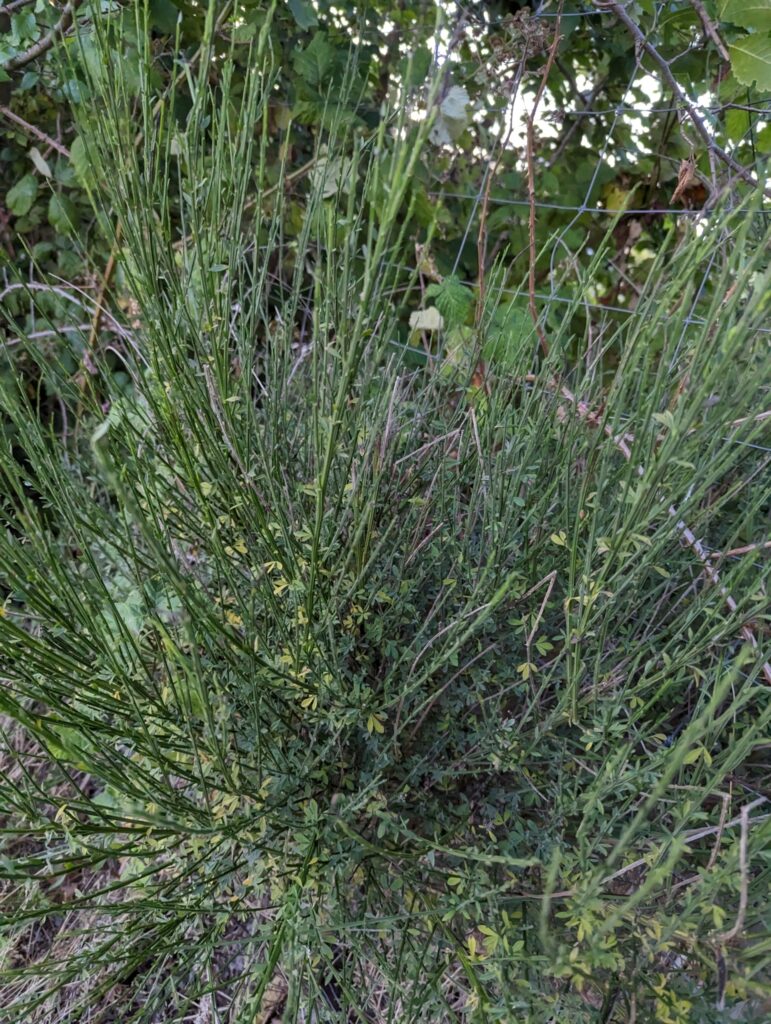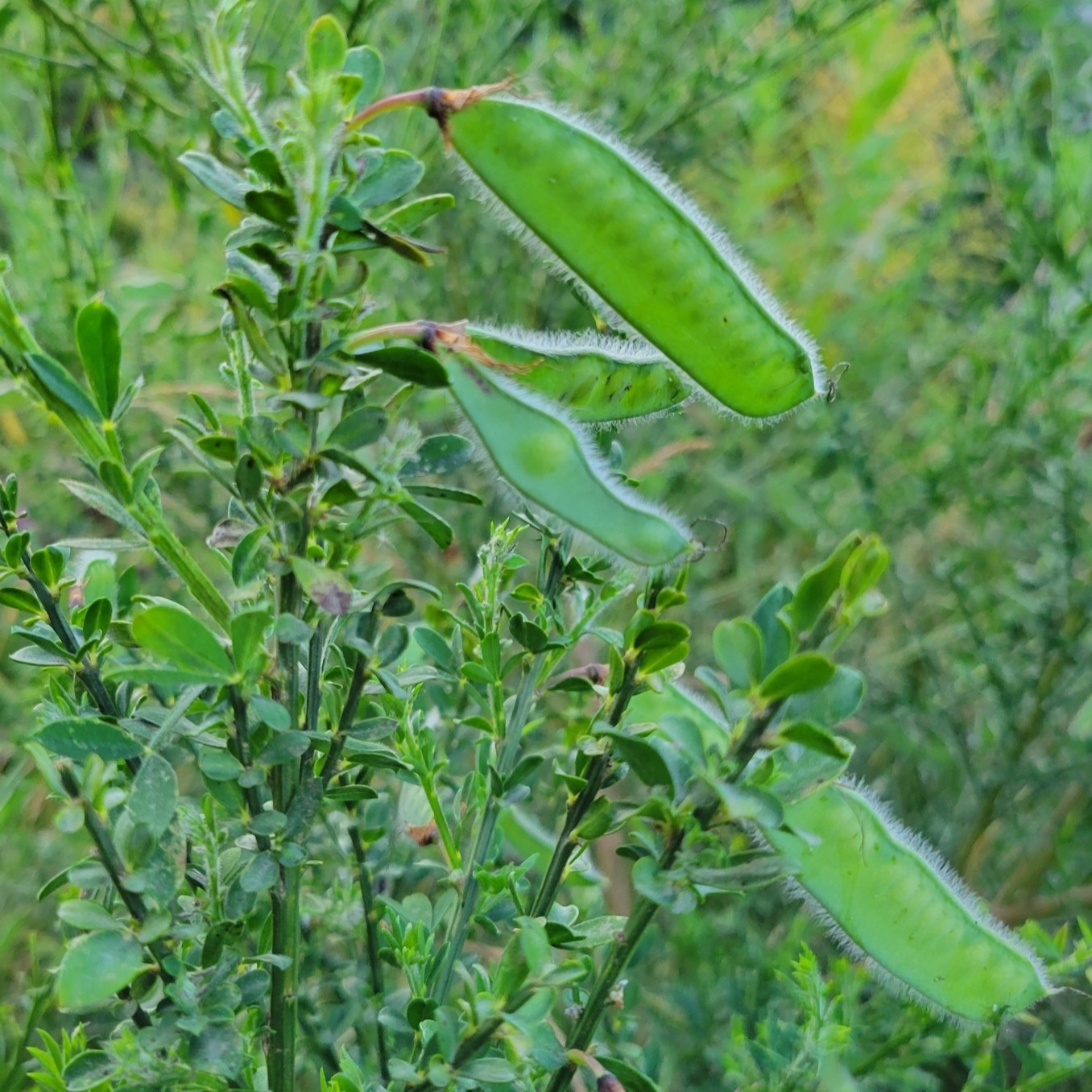Scotch Broom is a woody, perennial shrub in the pea family (Fabaceae) that grows upright in dense, brushy thickets. It typically reaches 1-3 m in height. Its erect, branched stems are green and strongly five-angled when young, helping the plant photosynthesize even with few leaves. As they mature, stems become woody and turn yellow-brown. Scotch Broom has small, oval-shaped leaves that are 5-20 mm long and alternate along the stem. Lower leaves near the base are compound with three leaflets, while upper leaves are unstalked and have a single continuous blade.
From June to July, Scotch Broom produces 5-petaled flowers that are 2-3 cm long and grow singly or in small clusters along the stem. Petals are often yellow but may also be tinged with red and orange. After flowering, the plant produces flat, 2.5-4 cm long seed pods that change from green to dark brown or black as they mature.
Scotch Broom grows in a wide range of environments but prefers open, disturbed areas at low elevations. It thrives in well-drained, sandy soils with full sun, though it can also tolerate partial shade and moist or nutrient-poor conditions. Scotch Broom can be found along roadsides, railway lines, utility corridors, gravel pits, dry fields, rocky slopes, coastal sand ecosystems, open meadows, and recently disturbed or deforested areas. Its rapid growth and ability to fix nitrogen give it an advantage over native plants, enabling it to dominate disturbed habitats. These dense thickets block sunlight, alter soil conditions, and make it difficult for native plants and wildlife to return, leading to declines in local biodiversity. Thickets of Scotch Broom can also increase wildfire risks and severity due to their high flammability.
Scotch Broom is native to Mediterranean Europe and was introduced in the 1850s as an ornamental plant and for erosion control. Today, it spreads primarily by seed. A single plant can produce up to 10,000 seeds annually, which can stay viable in the soil for over 30 years. As the pods mature and dry, they split open and eject seeds up to 5 m away. Seeds can be dispersed further by vehicles, road maintenance equipment, contaminated soil, animals, or water. Scotch Broom often establishes along roadsides and disturbed soil, especially where mowing or grading equipment unintentionally spreads seeds and soil.


Northern Bayberry (Morella pensylvanica) and Shrubby Cinquefoil (Dasiphora fruticose) are excellent native shrubs that can be grown instead.

Yellow pea-like flowers; green woody stem that turns brown when mature; green and black seed pods; oval alternating leaves with pointed tip.



The stems of Scotch Broom were once used to make brooms!
Controlling Scotch Broom requires early, repeated efforts. Remove plants before they develop seeds. Hand-pull or dig out small plants when the soil is moist, making sure to remove roots completely. Cut at ground level for larger shrubs with stems wider than 5 cm. Clean boots, clothing, tools, and vehicles after working in or near infested areas to prevent spreading. To dispose of the plants, place the materials on an impermeable surface like asphalt or a tarp and leave them to dry in the sun for several weeks. Once the plant material is no longer viable and fully dried, call your local waste management for directions on collection and disposal. Let them know if the plant material contains seeds or soil, as additional measures may be required to prevent further spread. If no seeds are present, the plant material can be left on site to decompose.
If you spot Scotch Broom, report it on iNaturalist or directly to the NSISC.